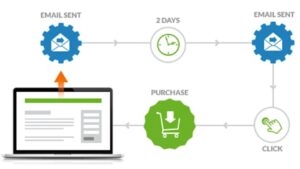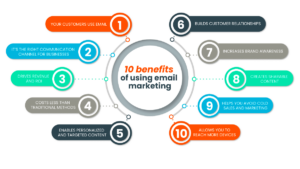Maximizing Business Growth with Email Marketing Automation
Introduction
Email marketing remains one of the most effective digital marketing strategies, but manually managing email campaigns can be time-consuming and inefficient. Email marketing automation streamlines this process, allowing businesses to send targeted, personalized messages at scale, improving engagement and conversions.
What is Email Marketing Automation?
Email marketing automation uses software to create workflows that send emails automatically based on predefined triggers or customer actions. These triggers include sign-ups, purchases, abandoned carts, and user engagement levels.
Key Benefits of Email Marketing Automation
- Increased Efficiency – Automates repetitive tasks, saving time and resources.
- Personalized Customer Experience – Delivers relevant content based on user behavior.
- Higher Conversion Rates – Well-timed emails nurture leads effectively.
- Scalability – Enables businesses to manage thousands of subscribers with ease.
- Data-Driven Insights – Provides analytics for continuous improvement.
Essential Email Automation Campaigns

- Welcome Emails – Create a strong first impression with an engaging introduction.
- Drip Campaigns – Send a series of informative emails to educate and convert leads.
- Abandoned Cart Emails – Remind users to complete their purchase.
- Re-engagement Emails – Win back inactive subscribers with special offers.
- Post-Purchase Follow-ups – Encourage repeat sales and build customer loyalty.
Best Tools for Email Marketing Automation
- Mailchimp – User-friendly and ideal for beginners.
- ActiveCampaign – Advanced automation and CRM features.
- Klaviyo – Perfect for e-commerce businesses.
- HubSpot – Comprehensive inbound marketing automation.
- GetResponse – All-in-one marketing automation solution.
How to Implement Email Automation Effectively
- Segment Your Audience – Divide subscribers based on demographics, behavior, and interests.
- Craft Compelling Content – Use persuasive subject lines and valuable content.
- Optimize Send Times – Schedule emails based on user activity for better engagement.
- A/B Test Campaigns – Experiment with different subject lines, CTAs, and content.
- Analyze Performance Metrics – Track open rates, click-through rates, and conversions.
Conclusion
Email marketing automation is a game-changer for businesses seeking to enhance customer engagement, drive sales, and boost productivity. By leveraging the right strategies and tools, businesses can create impactful, personalized email campaigns that deliver measurable results. Embrace automation today and unlock the full potential of your email marketing efforts!

